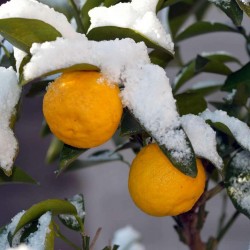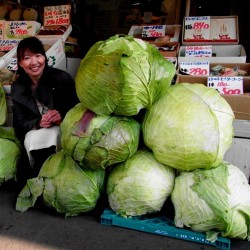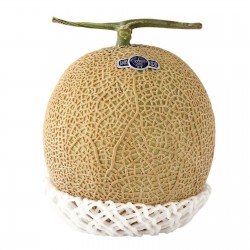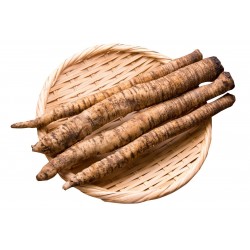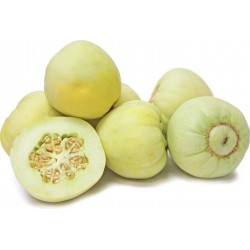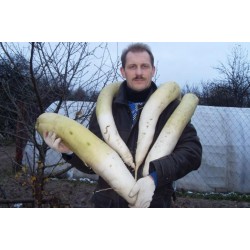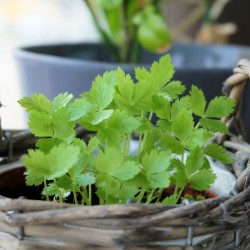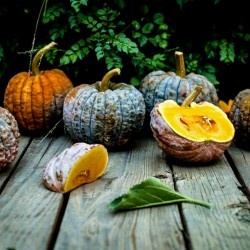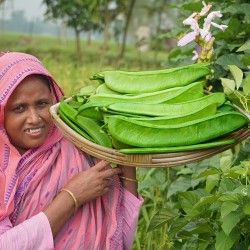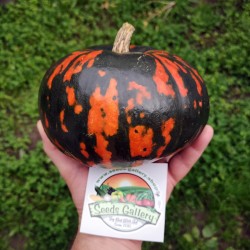Seeds Gallery Com,
5/
5
<div id="idTab1" class="rte">
<h2><strong>Semillas de Bardana Mayor TAKINOGAWA (Arctium lappa)</strong></h2>
<h2><span style="color: #ff0000;"><strong>Precio por paquete de 10 semillas.</strong></span></h2>
<p>Es una planta herbácea bienal, robusta de más de un metro de altura. Hojas grandes rugosas, ovales, alternas y de extremidad redondeada con grandes peciolos. Las flores se agrupan en corimbos y son de color rojo púrpura intenso y brácteas terminadas en ganchos. El fruto es una bola con muchos garfios que se adhieren a los animales para su difusión.</p>
<p><strong>Uso culinario</strong></p>
<p>La bardana se utilizó durante las Edad Media como un vegetal, pero ahora se utiliza muy poco, con la excepción de Japón, donde se le llama Gobo (牛蒡oゴボウ), Taiwan (牛蒡), Corea donde se llama ueong (우엉), Italia, Brasil y Portugal, donde se le conoce como "bardana" o "Garduña". Las plantas son cultivadas por sus raíces delgadas, que pueden crecer alrededor de 1 metro de largo y 2 cm de ancho.</p>
<p>Los inmaduros tallos de las flores también pueden ser cosechados a fines de la primavera, antes de que aparezcan las flores. El sabor se parece al de la alcachofa, a la que la bardana se relaciona.</p>
<p>En la segunda mitad del siglo XX, la bardana alcanzó el reconocimiento internacional por su uso culinario, debido a la creciente popularidad de la dieta macrobiótica, que aboga por su consumo. La raíz contiene una buena cantidad de fibra dietética (GDF, 6 g por 100 g), calcio, potasio, aminoácidos,1 y es bajo en calorías. Contiene polifenoles que causa la superficie oscurecida y la durezaen una formación de tanino. hierro. Estos polifenoles son derivados del ácido caffeoylquinico.2</p>
<p>La raíz es muy crujiente y tiene un sabor dulce, suave, picante y con un poco de dureza fangosa que se puede reducir al remojar las raíces en juliana/desmenuzada en agua durante cinco a diez minutos. La dureza muestra una excelente armonización con carne de cerdo en la sopa de miso (tonjiru) y takikomi gohan (un estilo japonés de pilaf ).</p>
<p>Un plato japonés popular es kinpira gobō, en juliana o rallado de raíz de bardana y zanahoria, estofado con salsa de soja, azúcar, mirin y / o sake, y aceite de sésamo. Otra es la bardana makizushi (sushi enrollado lleno de raíz de bardana en escabeche; la raíz de bardana es a menudo coloreado artificialmente de naranja para parecerse a una zanahoria). Gobo también se puede encontrar como un aperitivo frito similar en sabor y textura a las papas fritas y se utiliza en ocasiones como un ingrediente en el tipo de platos tempura.</p>
<p><strong>Uso en la medicina tradicional</strong></p>
<p>Las raíces secas de bardana (Bardanae radix) contienen mucílagos, compuestos de acetileno sulfurosas, poliacetilenos y amargo guaianolide de tipo constituyentes. Se utilizan en la medicina popular occidental como un diurético, diaforético y un agente purificador de la sangre.3 Los informes anecdóticos del siglo XIX sugieren que esta planta medicinal también ha sido utilizada por la tribu Ojibwa, y hoy en día, en forma de un ingrediente en té Essiac para el tratamiento alternativo de algunos tipos de cáncer.4 Como un macerado oleoso, es un componente de los cosméticos naturales, champús y productos de cuidado del cabello. Otras partes de la planta se utilizan para prevenir la calvicie y para tratar la artritis reumatoide, infecciones de la piel, acné, forúnculos, picaduras, eczema, herpes, impétigo, erupciones, la tiña, dolor de garganta, la ciática, la hiedra venenosa/roble, como un tónico y laxante suave, entre otros usos. Las semillas de bardana mayor se emplean en la medicina tradicional china en especial para enfermedades de la piel y en las fórmulas de resfriado/gripe, bajo el nombre niubangzi5 ( chino: 牛蒡子; pinyin: niúpángzi; algunos diccionarios chinos la enumeran solo como 牛蒡niúbàng.)6</p>
<p>Las semillas contienen arctigenina, que ha mostrado efectos nootrópicos en ratones.7 La arctiina y su aglicona, arctigenina han demostrado in vitro potentes actividades antivirales contra el virus de influenza A en ratones.8 La arctiina se transforma en un número de metabolitos estrogénicos por bacterias intestinales humanas.9 La arctigenina ha demostrado actividad anti-inflamatoria in vitro.10 Las semillas han mostrado alguna actividad anticancerígena.</p>
<p><strong>Distribución y hábitat</strong></p>
<p>Planta original de Europa y Asia y difundida por América, prolifera en suelos baldíos, bordes de caminos, escombreras y cerca de zonas habitadas.</p>
<p><strong>Historia</strong></p>
<p>El uso medicinal de la bardana es viejo, como lo demuestra su presencia en la Capitulare de villis vel curtis imperii, una orden emitida por Carlomagno que reclama a sus campos para que cultiven una serie de hierbas y condimentos incluyendo "parduna" identificada actualmente como Arctium lappa.</p>
<p><strong>Propiedades</strong></p>
<p> La raíz es comestible. Contiene cantidades importantes de inulina, un polisacárido que forma parte de la fibra dietética, con interesantes efectos sobre la salud. La inulina es diurética y se puede administrar por vía intravenosa en ciertos casos de edema cerebral y en algunas insuficiencias renales.</p>
<p> Estimula el hígado y la secreción biliar.</p>
<p> Sudorífica e hipoglucemiante.</p>
<p> Utilizada en el tratamiento del acné, forúnculos y eczemas.</p>
<p> En la Farmacopea de China está indicada el extracto de la raíz para el tratamiento del SIDA y del cáncer. Figura asimismo en la farmacopea de otros países orientales.</p>
<p><strong>Nombre común</strong></p>
<p> Castellano: agarrocha, agarrucha, aguipegotes, amor de hortelano, amores, amores ruines, anteón, apegaderas, arrancamoños, bardana, bardana mayor, bardana menor, cachorrera, cachurrera, cachurro, cachurros, cadillo, cadillos, cadillos monteses, caillos, carbano, cardinches, cardincho (fruto), carrapicho, carrapeto, carrapito, carrapizo, cerdón (fruto), cerdonera, cerón (fruto), ceronera, chapaqueros, escardamulas, gangas, garbanzos de cura, garrapito, garrapitos, garrapote, gordolobo, gordolobo loco, gordolobo seco, hierba de los tiñosos, hoja de lampazo, hoja de sapo, lamparasa, lamparaza, lampatio, lampaza, lampazo, lampazo mayor, lampazo menor, lampazos, lapa, lapa de bueyes, lapa de San Bernardo, lapaiza, lapa mayor, laparasa, lapazo, llapazo, mona, moritos, namorao, nigueruela, orejas de burro, pegadillo, pegadillos, pegajosos, pegote, pegotes, personata, personatia, peyicón, peyizos, respigón, sampazus, sanalotodo, sarapico, yampazo, yapazo, yerba de los tiñosos, yerba peyicona, zarapón, zarapote, zarrapote, zarrapotes, zarrapotillo.</p>
</div>
MHS 47 (10 S)


